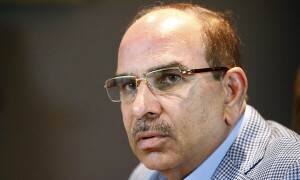THE cost of medicine is a global hot topic. In the US, it has brought the Democrats and the Republicans on to the same page. Here, much criticism regarding the recent increase in medicine prices has been levelled against the Drug Regulatory Authority of Pakistan (Drap) and the pharmaceutical industry. There is much hype on the subject as comments are forwarded by different quarters, with wide variations depending on the differing stakes and understanding of the technical intricacies and market economics involved.
Earlier this month, the contents of a letter written to Prime Minister Imran Khan surfaced in the media that highlighted “the existing inexplicable drug prices hike”. The letter, penned by the deputy director of Drap, stressed the need to address the wide difference of medicine prices quoted by manufacturers compared to the prices at which they are sold in the consumer market. While attempting to fully understand the reasons and motivations behind such price differences, let us have a clear picture of the broader context in which the public procurement of medicines take place.
The public procurement of medicines is done primarily for big hospitals. Doctors, consultants and professors working in such hospitals provide a unique niche to the pharma industry to promote the trend for their medicines, which then leads to a snowball effect, starting from the medical professional at the senior level, and trickling down to the ones at the junior level. Once publicly procured, such companies stand at an advantage (with no extra cost to the company) as compared to others, which translates into more business for them in the marketplace.
Through such competitive practices in public procurement, companies aim to secure an advantageous position over their competitors in the overall marketplace. It is only logical for the companies to participate aggressively in public procurement with the aim to competitively occupy the turf and promote their business opportunities. In this way, the medicines which are procured for use in public hospitals have a positive knock-on effect for companies in the market at large, with no extra marketing cost to the company. This means more revenue at low cost.
There is much hype, yet little clarity regarding the cost of medicine.
In this backdrop, companies sometimes bring their prices down to a bare minimum, or even at a price lower than the net cost, just to keep the competition out and occupy the market space. Therefore, quoting public procurement prices as an argument to suggest that the difference between the public procurement prices and the consumer prices (maximum retail price) only goes to show that the companies are earning ‘exorbitant’ profit margins is not accepted as a straightforward deduction.
The quality and price of medicine are issues debated in the ‘public good’ arena. As such, there is a dire need of having a well-informed debate by various stakeholders. It would be appropriate to suggest that such technical matters be actively participated in by professionals to explain and inform the public debate, as well as for policy framing. The industry, most of the time, is portrayed in a bad light without taking into consideration other dynamics at play such as the need to generate more revenue in order to produce quality, low-priced medicines in large quantities to cater to an increasing population. Similarly, other factors at play, such as taxation in the name of ‘research and development’, further diminishes pharma’s operating field. This is because in reality, hardly any FDA- or WHO-approved laboratories exist in Pakistan. Tax continues to be collected with no information regarding where the money ends up.
In the absence of professional input, important issues of high public interest (such as those related to medicines) get distorted, resulting in the possible skewing of public policy and the regulatory framework. In this case, both the media and government need to play a more responsible role to present a coherent picture, instead of putting all the blame on the industry in the name of ‘welfare’. As per one estimate, in July-March FY 2019, the industry’s production contracted by 8.4 per cent, the worst in the last 10 years.
Once labelled a ‘sunshine industry’ due to reputable international pharmaceutical companies operating in the country and providing employment opportunities, the situation over time has gone dire where only a handful of multinationals now operate in Pakistan. The government needs to adequately support the industry, instead of tightening its grip on the industry’s throat. We have seen in the past that price control measures taken by the government have only led to devastation where consumers end up bearing the brunt in the form of shortage of medicines.
The writer is a freelance contributor.
Published in Dawn, August 27th, 2019











































